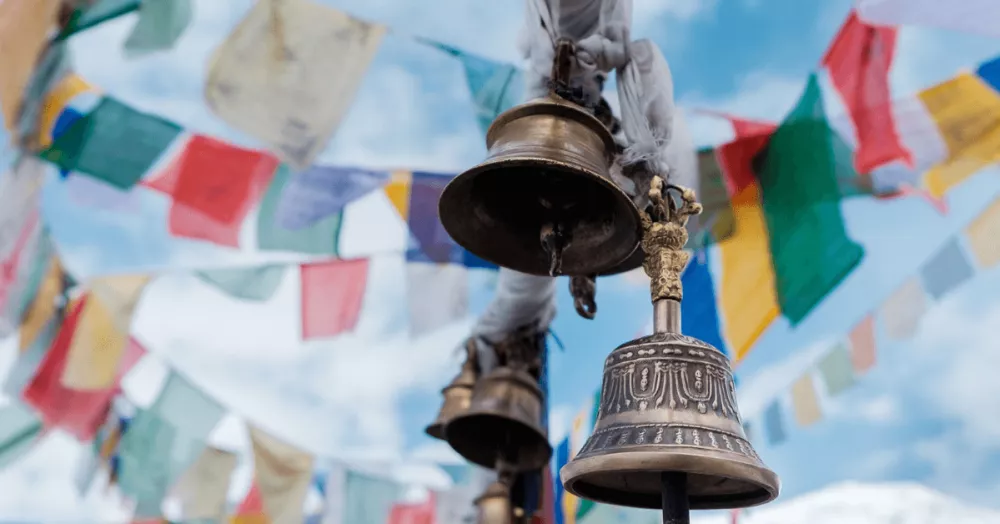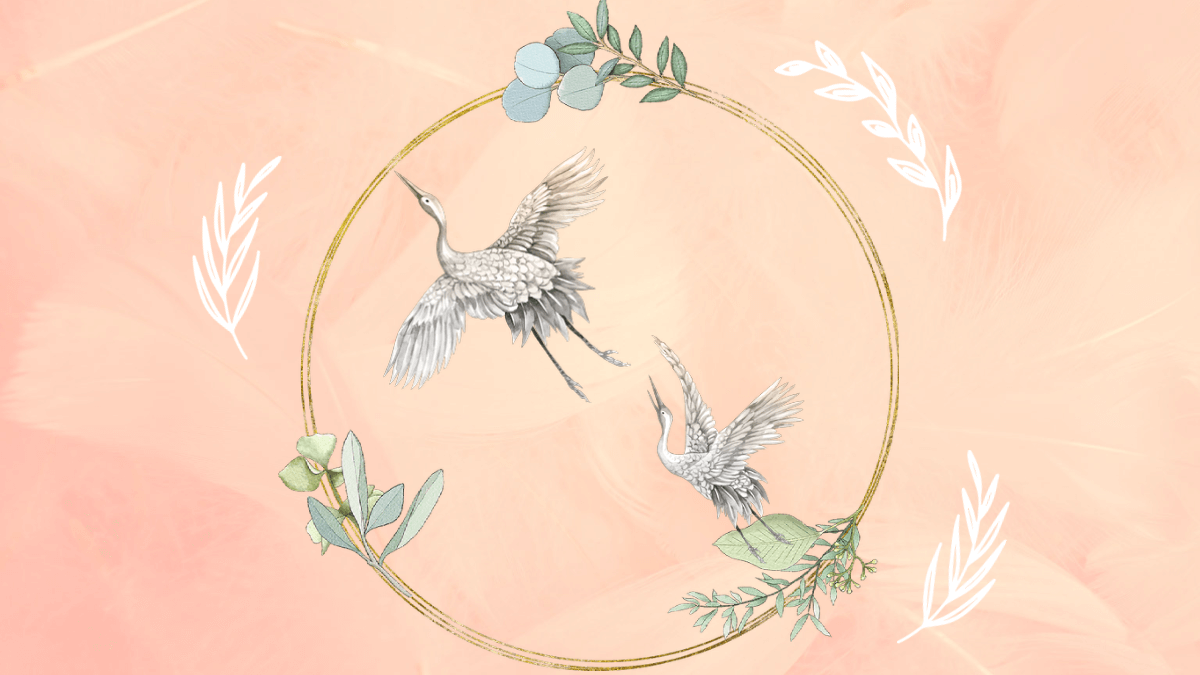The Deep Significance of Tibetan Prayer Flags
These little colorful Tibetan Prayer Flags fluttering in the wind have the power to heal the world. Read on to learn about their true meaning.

When we pray, we typically ask God or the Universe for something. Something that we want in our lives and that will benefit us, largely speaking. However, ancient Buddhist and Tibetan philosophy believes in something much bigger. It believes in asking for something that will benefit the world and all living beings on the planet. That is the sacred philosophy behind prayer flags. They don’t take the prayers to the Gods on behalf of the bearer, rather, it spreads the prayers and good wishes across the planet earth. Wherever the wind blows, whatever it touches is blessed is also the reason why prayer flags are typically tied on high altitudes where the wind blows in abundance and helps the prayer flags spread their goodwill.
Whether you believe in the meaning behind the prayer flags or not, these colorful flags fluttering in the wind are sure to cheer you up and lift your spirits. Often seen in Tibet, Nepal, and the Indian Subcontinent, these flags have now gained popularity across the globe, especially in the USA.
If you have hiked to the base camp (or anywhere in the Himalayas) in the intense climatic conditions, you’ve likely seen prayer flags fluttering everywhere. And we’re sure that they have put a smile on your face each time through the gruesome climb.
What are Tibetan Prayer Flags?
Tibetan prayer flags are not prayers themselves, but rather a way of generating compassion and wisdom by inspiring positivity in the world. Tibetan prayer flags, also called Windhorse flags, are usually rectangular in shape. They are also widely (even locally) known as Lunta or Lungta – Lun means wind and ta means horse. When the prayer flags flutter in the wind, it carries goodwill and blessings with it to the world.
What does it mean to set something free if you love it, especially in relationships? Let’s decipher this somewhat confusing quote.
lifeism.coPrayer flags are used to invoke compassion and wisdom. These flags hang outside or along a mountain path to bring good luck and protection to those who walk or travel by them. The primary purpose of Tibetan prayer flags is to provide an invocation for spiritual blessings.
Tibetans believe that the wind will carry the prayers and mantras across the world to benefit all beings. It is also believed that if hung outside or along a mountain path, they bring good luck and protection to those who walk or travel by them.
Colors of the Tibetan Prayer Flags
Prayer flags typically contain five colors, and each color represents the five elements of nature:
- The blue color on Tibetan prayer flags represents the sky or the space.
- The yellow color represents mother earth
- The red color represents the fire
- The green color represents the water
- The white color is representative of the wind
While there are some similarities between the prayer flags, they come in many different forms. The most popular type of prayer flags are pieces of colorful cloth strung together and hung horizontally. However, prayer flags can also be strung vertically and then mounted on a pole. While cloth prayer flags are more popular, they have been made from paper, wood, copper, etc. as well.
The flags also vary when it comes to what is written or printed on them. While many prayer flags have the symbol of the Windhorse, others have protective animals, mantras, and prayers written on them. There are many flags that are just simply blank.
Grief and love are intertwined intricately & it's impossible to decipher where one begins & other ends. Because, grief is love with nowhere to go.
lifeism.coOur favorite version of the flag has the mantra, “Om Mani Padme Hum.” written on it. The mantra is not strictly religious, but it does originate from the Buddhist religion. The mantra literally means “Praise the jewel in the lotus” or “I the jewel in the lotus”. While the mantra may seem cryptic, it is said to have multiple meanings and is a universal prayer.
History of Tibetan Prayer Flags
Prayer flags have been around for over 2000 years in the region of Tibet, well before Buddhism was popularized there. It used to be a symbol used by the Bon religion or as some say the Shamanic tribe. As with many early religions, they worshipped the elements of nature – earth, water, wind, fire, and air. It is believed that this is where the prayer flags got their colors and their significance. It is still believed that health and harmony can be achieved when all five elements of nature are in balance.
Are Prayer Flags Religious?
Tibetan Prayer Flags are very much part of the religious and spiritual beliefs and practices of Tibetan Buddhism. Many authentic prayer flags are blessed by the monks and are said to carry the fruits of their piety within them. However, anyone can use prayer flags (if they wish to spread peace and compassion in the world). We request that all prayer flags are treated with respect and care and should not to mishandled.
What is the best date to put up Tibetan Prayer Flags?
The best day to put up the prayer flags is on the Buddhist New Year which typically comes in January. A quick internet search will reveal when the next new year is. In addition, there are several auspicious days to put up the flags throughout the year. We recommend displaying your prayer flags when you sense a strong sense of change in your life, or in the world around you.
As His Holiness, the Dalai Lama often says, the intention with which you put up the flag is more important than the date/day that you do it.
What do you do with an old prayer flag?
If your prayer flags are now faded, frayed, and look like they're on their last legs, it means that they have spread the message of peace and compassion in the world, and it is now time to retire them and replace them with new ones. You can burn the flags (it represents invoking of any remaining blessings in the prayer flags and setting them free).
Do Prayer Flags Need to Be Blessed?
Traditionally speaking, all prayer flags need to be blessed by the Tibetan Monks for it to fully encapsulate the good vibrations within the prayer flags. Many websites across the world now sell prayer flags after they are blessed by a monk.
Stuck in a rut vibrating at lower levels of consciousness? Here are some of the best ways to raise your vibration.
lifeism.coThe true beauty of Tibetan prayer flags or Buddhist prayer flags can only be experienced visually and spiritually in person. They are widely available now across the globe, we recommend purchasing one to truly experience their spiritual connection to the world.
Have you experienced the beauty of prayer flags? What was your experience? Do let us know in the comments, we’d love to hear from you.








Comments